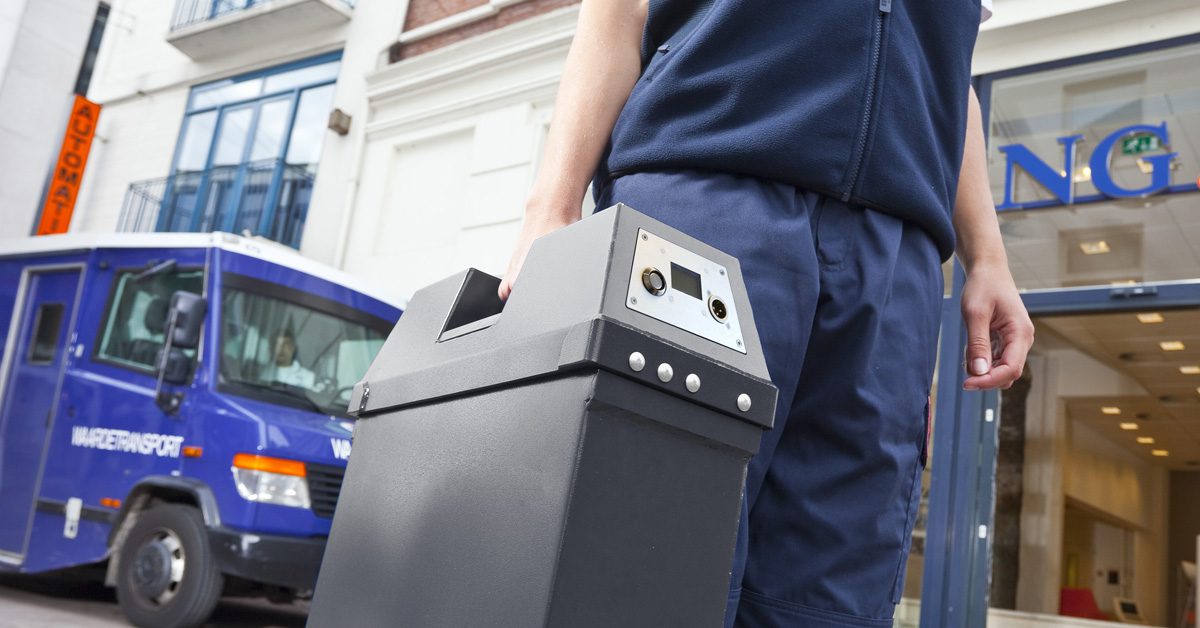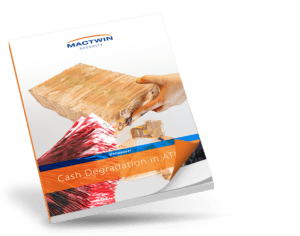Criminals left empty-handed by cash degradation in CIT
In many countries, attacks on Cash in Transit operations are still taking place. Even though there are many solutions that should eliminate this scenario for good. However, many of these solutions are aimed at fast detection or counteraction (delaying) of the criminals. At Mactwin, we believe that you shouldn’t fight criminals’ capabilities, but their motivation. By removing the chance of a reward, criminals won’t be motivated to attack at all. We are convinced this is the only effective solution. In this article you will read how this works.
Attacks on CIT operations mainly take place when the CIT officer moves from his vehicle to a customer location. This particular risk is also known as ‘pavement risk’. Employees are relatively safe in the armored vehicle. However, once they leave that vehicle, they are vulnerable. Criminals often cut off the officer on a scooter and, threatening the officer with a weapon, steal the cash box or (in some countries) the bag containing the money. With a scooter, escape is fast and easy. Especially in densely populated areas.
What is the best solution?
Equipping employees with (heavy) weapons only encourages more violence. If you want to eliminate this type of attacks on CIT operations, you have to fight the criminals’ motivation by removing the expectation of a reward. This is done by degrading the cash inside the cashbox. If this degradation also is distinctive and irreversible, the cash is made worthless. As soon as criminals know that cashboxes are equipped with a form of irreversible cash degradation, they will be convinced that attacking will be completely futile. They will have to look for another target and this criminal scenario will cease to exist. In the Netherlands, there are almost no more attacks on CIT crews, since the introduction of MactwinBox with cash degradation modules in the early eighties.
Cash degradation – how it’s done
At the moment, two forms of cash degradation are available for cash boxes. The most well-known and traditional is cash degradation with ink. An alternative solution is degrading with High Energy.
Ink
An ink staining system sprays coloured ink over the banknotes in the cash cassettes. This will stain a part of each banknote. The ink (usually green, blue, red, pink or black) spreads across the banknotes from the outside inward. Manufacturers claim the ink is indelible and permanent. Some ink staining systems have an integrated DNA marker that allows for police to link banknotes to a corresponding attack. Rightful owners of the degraded banknotes can (in most countries and under certain conditions) be reimbursed by the national bank. Note: in CIT processes that work with seal bags, ink systems have a major challenge to bypass these sealbags and get the ink on the notes… Our experts are happy to tell you more about this.
High Energy
The best-known alternative to ink is the use of so-called High Energy degradation. Heat first melts the seal bag(s) in the cash box. Subsequently, the existing notes are damaged by the heat in such a way that the physical properties (size and weight) of the notes are irreversibly changed. Half or scorched notes can never be used as legal tender again. They are clearly recognizable as worthless and will not be accepted by any human or automatic payment system. However, the denomination of the notes (and the authenticity) remains recognizable, so that they can be exchanged at the national bank in most countries – under certain conditions.
Choosing a cash degradation method and solution
If you want to deploy a form of cash degradation in your operation, you’ll start with choosing for one of the available methods. Subsequently, you have to make a choice between available systems from different suppliers. Not quite a simple task. There are many things to take into account. Please note the 5 most important considerations below (in random order).
- Banknote degradation: distinctive and irreversible
- Flexibility in operation
- Health & Safety
- Certification and local legislation
- Price & TCO
Whitepaper
Mactwin wrote a whitepaper, extensively covering these 5 considerations. CIT companies and their service parties can request this whitepaper, free of charge, on our website: https://mactwincashsecurity.com/whitepaper-cash-degradation-cit/


